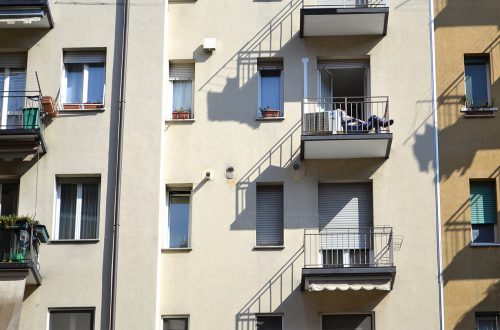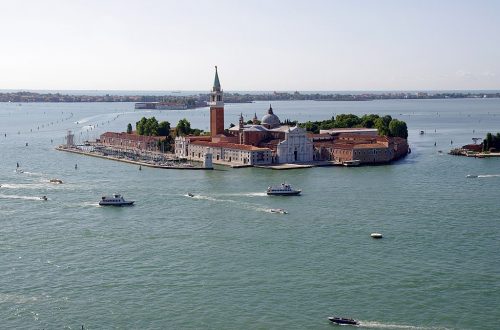
Leonardo Da Vinci 3D. Immersive and Interactive Experience (Milan, Italy)
Leonardo Da Vinci 3D is a multisensory exhibition dedicated to life and secrets of the Renaissance genius. The futuristic spirit of Leonardo was brought to life by a high-tech multi-projection system that offered an educational and entertaining experience to the participants: images and music moving along ceilings, walls and columns, holograms, virtual and augmented reality.
Background
The “Leonardo Da Vinci 3D Exhibition” was firstly organised in 2019, before Covid-pandemic, when the City of Milan decided to celebrate the fifth centenary of Leonardo Da Vinci’s death.
The exhibition was organised by a private company Medartec Distribution and by the City of Milan, in collaboration with Consiglio Nazionale delle Ricerche (National Research Council) and the Art Media Studio.
The second exhibition took place in summer-autumn 2020, during the Covid pandemic. It was organized in Milan, Italy at the Museo Fabbrica del Vapore – a train/tram factory renovated into a cultural center. This space is owned by the Municipality of Milan, responsible for programming the activities and events in this space under temporary concession.
The exhibition was aimed at families as its main target group.
Description
Leonardo Da Vinci 3D is an exhibition, carefully designed and structured thanks to technological solutions, ultra-high-resolution images, holograms and music. The objective of the exhibition was to educate and to entertain the public at the same time. It used an unprecedented mixture of languages, where tradition and innovation managed to dialogue.
The exhibition was divided into ten sections:
- Leonardo – historical introduction. From the entrance with the ticket office, the visitor entered a first “educational” room, where the historical framework of Leonardo’s character and his works were shown.
- Paintings and machines – a room with a timeline of Leonardo’s life, and a series of models of the machines he designed and built.
- Immersive Leonardo Virtual Reality
- Hall of Mirrors, dedicated to flight and the study of flying machines.
- Holograms – the main show of the exhibition, in which lights, images, and music involve visitors for about half an hour.
- Leonardo in Milan – a room dedicated to Leonardo’s time in Milan and his works.
- Alinari’s archive
- Da Vinci Art Experience – virtual, interactive, and educational experiences.
- Virtual pop book
- Leonardo’s workshop
In addition to usual activities, the exhibition was updated during the Covid-times. The visitors of the exhibition could follow a virtual tour with their Android device (smartphone or tablet), which includes:
- short educational videos
- information about the works
- models and paintings in augmented reality
- possibility of participation in games in the application
- making creative selfies
- participation in interactive quizzes
Besides the tour around the exhibition with augmented and virtual reality, yoga workshops were planned as well, which were cancelled then during the second wave of Covid-restrictions in Italy (October 2020).
Leonardo Da Vinci 3D was particularly suitable for families. There was also a room inside the exhibition dedicated to activities with children, open by appointment and with regulated access, where they could experience the artistic and “engineering” moments of Da Vinci.
Impact
The exhibition was highly appreciated by the participants because of its innovative approach to art and method of communication with the visitor. Alongside the highly technological support on which it is based, it also used a specific methodology, designed to fully involve the observer: the “immersive” strategy. The visitor could find himself completely “immersed” in the exhibition, surrounded by 4 moving art walls in 3D, becoming the protagonist.
As the exhibition was promoted by the Municipality of Milan together with private companies, it obtained vast visibility and huge dissemination.
This initiative used different social channels to attract the largest number of visitors in a heterogeneous way. It has a youtube channel, a Facebook page, an Instagram, and a Twitter profile. The biggest engagement was reached on Facebook (with more than 12.000 people following the page) and Youtube (with more than 70.000 views).
After success in Italy, the exhibition moved to Switzerland and Finland.
Interpretation
This revolutionary idea to use holograms and augmented reality at the exhibition succeeded to bring people who are usually not interested in culture closer to art. Thanks to these technological means, the facts about Da Vinci’s life and work became an attractive and exciting experience, a method to escape from scary Covid reality.
References
- Leonardo da Vinci 3d. https://www.leonardodavinci3d.it/it/la-mostra (accessed December 10, 2021).
- Youtube Channel. https://www.youtube.com/channel/UCPTMdXtRd0UyEhF0WjN2O8g (accessed November 19, 2021).
Author
Header photograph
Anamorphosis of a werewolf taken from Leonardo da Vinci’s Self-portrait with two- and three-dimensional reconstruction (Wikimedia Commons)




